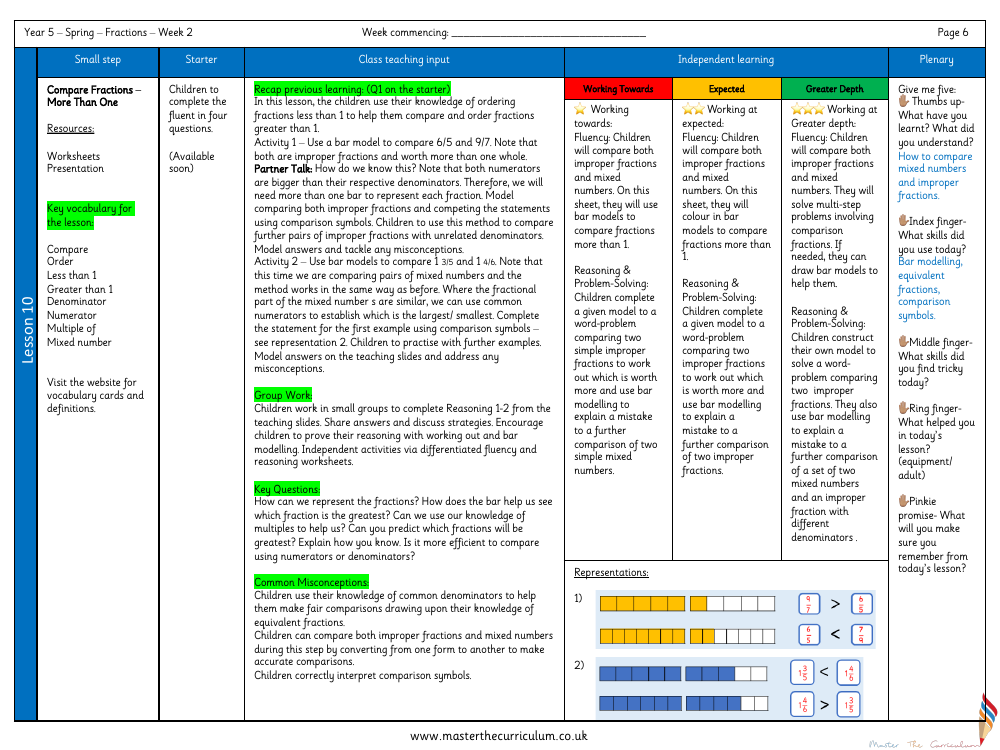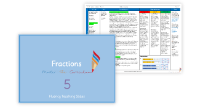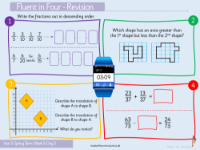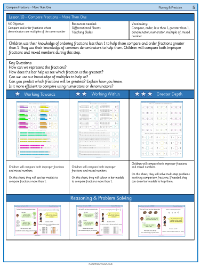Fractions - Compare Fractions (More Than One) - Planning

Maths Resource Description
In the Year 5 spring term, students are introduced to comparing fractions greater than one, building upon their understanding of how to order fractions less than one. The lesson begins with a starter that revisits previous learning and sets the stage for the day's focus. The class teaching input utilises bar models to visually represent and compare improper fractions, such as 6/5 and 9/7, where the numerators exceed the denominators, indicating they are worth more than one whole. Through guided activities, students learn to use comparison symbols to denote which fractions are larger or smaller. They apply this method to mixed numbers as well, comparing fractions like 1 3/5 and 1 4/6, and use bar models to identify the larger fraction when the fractional parts are similar.
During group work, students collaborate to complete reasoning tasks and share their strategies, ensuring they can articulate their understanding and use bar modelling to support their arguments. The lesson's key questions prompt students to consider different methods of representing and comparing fractions, and to use their knowledge of multiples and denominators for efficient comparison. Common misconceptions are addressed, such as the importance of using equivalent fractions for fair comparison. The plenary includes a 'Give me five' activity where students reflect on what they've learned, the skills they've used, and the strategies that aided their learning. Differentiated activities cater to varying levels of fluency and reasoning, ranging from comparing simple improper fractions and mixed numbers to solving multi-step problems and constructing models for more complex comparisons, all aimed at deepening their understanding of fractions greater than one.




